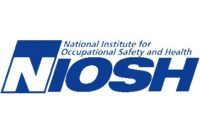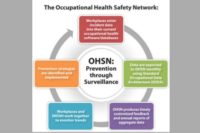NIOSH develops tool to monitor disaster responders’ health
 Emergency responders called to duty at both natural and man-made disasters will have their post-deployment health monitored by a new surveillance system developed by the National Institute for Occupational Safety and Health (NIOSH).
Emergency responders called to duty at both natural and man-made disasters will have their post-deployment health monitored by a new surveillance system developed by the National Institute for Occupational Safety and Health (NIOSH).
“Post-deployment assessment is important because long-term health effects on responders following disasters may not be readily apparent for many years, and reconstruction of exposure information needed for a long-term health monitoring and surveillance program can be difficult,” said NIOSH Director Dr. John Howard.
Health monitoring and surveillance
Information on the location, tasks, duration and exposures for responders can be used both during the incident to mitigate acute safety and health concerns as well as provide the critical information needed to set up long-term health monitoring and surveillance systems quickly and effectively.
Howard noted that, with large-scale disasters such as Hurricane Katrina, 9/11 and the Deepwater Horizon oil spill, there was some guidance about how best to prepare response workers both before and during deployment, but less attention on assessing responders’ health after they completed their deployment.
With this in mind, in 2008 NIOSH convened an multidisciplinary public health workgroup to address these concerns. The Emergency Responder Health Monitoring and Surveillance (ERHMS) system was developed in 2011 by this workgroup. It includes both written guidance and epidemiology/surveillance tools as examples of current best practices for protecting response, remediation, and recovery workers and volunteers.
The system is described in a new federal publication, "Emergency Responder Health Monitoring and Surveillance: Technical Assistance Document," which was recently published by the National Response Team, an organization of 15 Federal departments and agencies, including NIOSH, responsible for coordinating emergency preparedness and response.
Protecting emergency responders
The ERHMS system can be applied in both smaller, localized incidents, as well as larger incidents. Importantly it provides guidance to help protect emergency responders before, during, and after an incident. The document provides tools and resources for response organizations that will help in ensuring the health and safety for responders within each phase of the incident and, will assist organizations in monitoring the health of responders in the post-incident phase.
Howard said the next step in the development of this system will be to implement and field-test the principles and components of ERHMS in both real-world emergency response events, practice exercises, and training venues. NIOSH successfully implemented some of the components of ERHMS in the Deepwater Horizon oil spill in 2010 such as rostering, injury and illness surveillance, and Health Hazard Evaluations.
“We more fully demonstrated an implemented of ERHMS in a large scale interagency training exercise conducted last year, which also tested the utility of hand-held electronic data collection techniques. “
NIOSH and other stakeholders among the centers and institutes of the U.S. Centers for Disease Control and Prevention (CDC) are currently seeking funding to conduct advance training seminars for public health agencies to learn more about ERHMS and other CDC-developed disaster response resources in order to better translate this research into practice.
The full ERHMS document as well as a summary document is available on the NIOSH website www.cdc.gov/niosh/topics/erhms/ or on the NRT website at www.erhms.nrt.org. For a comprehensive list of emergency response resources from NIOSH please go to www.cdc.gov/niosh/topics/emergency.html.
Looking for a reprint of this article?
From high-res PDFs to custom plaques, order your copy today!







